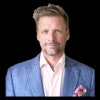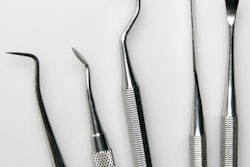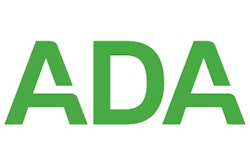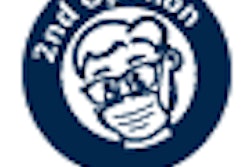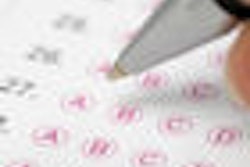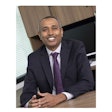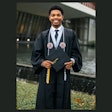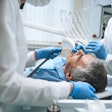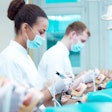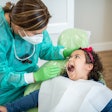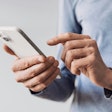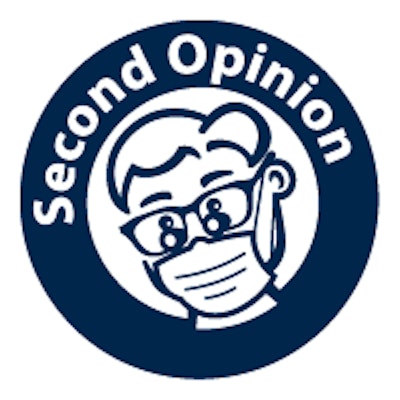
One of the rituals of spring in the U.S. is that somewhere a fourth-year dental student is desperately searching for an adult who will allow a tooth, a tooth with just the right location and sized radiolucency, to be drilled and filled in a ritual called clinical dental examinations. These are a requirement of dental boards for licensure in most states. Whether the "perfect lesion" is active or not is irrelevant. What many among us would chart as a "watch" would happily be presented for resection and restoration in a board exam.
It is a system unique to dentistry, in which young dentists learn that patients can be recruited for a "snapshot examination" by whatever means necessary, treated and disposed of "in the interests of protecting the public."
 Allen Hindin, DDS, MPH.
Allen Hindin, DDS, MPH.This year, almost 6,000 dental students will recruit more than 12,000 live patients and spend perhaps millions of dollars in the process. Dental schools will shut down their clinics to enable testing, which costs revenue and interferes with patient care.
As the exam date nears, desperation grows exponentially, as candidates without board patients hunt among friends, relatives, anyone whose tooth might have the "perfect board lesion." Some will pay hundreds of dollars to volunteers; some thousands to professional dental board patient providers and coaches; this is a business like no other in U.S. healthcare. Extortion by board patients demanding hundreds of additional dollars at the last minute also has occurred.
Failures may occur because of a patient or student illness, patients failing to show up, or clinical error. If a student fails, then that part of the examination must be taken again. For those who fail the exam three times, does the failure rate justify the inherent ethical challenges? For instance, are the lesions active? How many experienced generalists "watch" lesions that seem never to change, while those same lesions may be considered "ideal" for the purpose of boards? What lesson does it teach dentistry's students and recent graduates? Does the end justify the means?
Recruiting and using patients specifically for examination purposes has long been considered unethical. No U.S. healthcare ethicists or Institutional Review Boards would support use of human subjects solely for the purpose of a clinical licensing examination. Dental school deans, faculty, and students overwhelmingly oppose these exams. The ADA, the American Student Dental Association, and the American Dental Education Association have called for an end to it, urging examiners to find alternatives. Examiners have continually refused.
Live patient examination
What evidence demonstrates that the examination based on live patients is protective of the public? What evidence shows the process to be necessary? Other methodologies have been used with apparently equal effectiveness. New York state eliminated patient-based examination, requiring instead successful completion of at least one year of accredited dental residency education (PGY-1). California allows portfolio review of students overall performance in dental school or PGY-1, in lieu of a human subject-based clinical licensing examination. Connecticut accepts PGY-1 or passage of patient-based dental board exams, and Minnesota accepts the long-standing and studied Canadian Objective Simulated Clinical Examination (OSCE).
“What evidence demonstrates that the live patient-based examination is protective of the public?”
Examiners claim, nonetheless, that there are no suitable alternatives to the use of human subjects in clinical examinations. "Trust us," they say.
What kinds of problems bedevil U.S. dentistry? How often do they occur? Significance? Importance? One might expect that studies could answer these questions. Examiners could then focus efforts toward solving them, rather than perpetuating a testing system of questionable benefit to dentistry and the public.
Dental examiners were created in the late 19th century for the purpose of eliminating proprietary education. Accreditation and national dental board examinations evolved during the 20th century. Nonetheless, examiners using recruited human subjects for a snapshot clinical examination have persisted in claiming their roles to be essential for the purpose of protecting the public from poor-quality dentistry.
Board examiners wield tremendous power over dentistry and have claimed continued necessity since the 1890s. Isn't it time for a proper study of the role of dental board examiners and validity of clinical licensing examinations in U.S. dentistry?
Allen Hindin, DDS, MPH, serves as dental director for United Cerebral Palsy of the Hudson Valley.
The comments and observations expressed herein do not necessarily reflect the opinions of DrBicuspid.com, nor should they be construed as an endorsement or admonishment of any particular idea, vendor, or organization.



